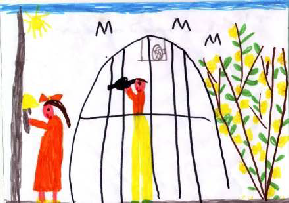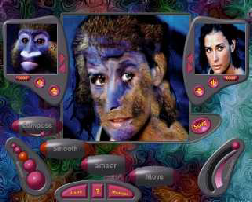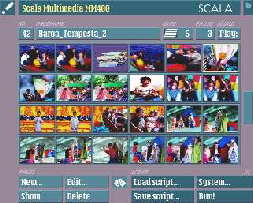ANIMAZIONE TEATRALE (Theatre as “animazione”)
Children draw as they play, make theatre as they play, know as they play.
Free moving in a room that becomes the space of communication, relaxing, expressive gesture, using voices and objects.
It is not a matter to play a show (we can do it, eventually) but to grow together recovering that unity between mind and body, play and culture that is natural for young children and that usually faint while meeting the adult world. Theatre techniques are learned, but above all a different and important way to stay together is experimented, and to express ourselves and to communicate, among school mates and with the educator.
To the question “What have been of use for you the course of animazione teatrale?”, the most of 13 years old girls and boys answer: To get over our shames!”

|
STORY INVENTION Observing and imagining.
Characters cards, pictures, animation and sounds at the computer, the natural and human environment around, puppets and masks, the movements of our own body and the others’ in a room: from the work of the group stories are created, proper and precise, and the play is to tell them, using the voice, a written text, dramatic gestures, a video, a multimedia. It is followed the disposition of the children to play with themselves and with the world, to amuse and transform it with joy and irony. And not only stories of fantasy, as the method is the same that researchers, historians and scientists use: from a coherent observation, through imagination, they carry out the reconstruction of the historic period or of the physical laws. It can be really an exciting experience to observe, imagine, produce together with the children. |
|
|
|
|
|
LET’S COPY!
To copy like observing, reproducing, living again, understanding. The world we know maybe is just what we “copy”. How many ways, many instruments to copy the world, to copy ourselves ? In different manners, children, boys and girls choose the “objects” to copy and the “tools”, various and different, to copy with. Copying with words, drawings, gestures, copying with the machines that reproduce and technically process the reality. Copying to make things real or unreal, soften, exaggerate them... Not a settled didactic way, but an adventure exploring and discovering that can take to unusual “exhibitions” of “copied objects”, revealed and seen from many different points of view. While the ability increases of watching , understanding, thinking over ourselves and the world, over the languages and the techniques useful and convenient, over the soft limit between reproducing and manipulating... |












